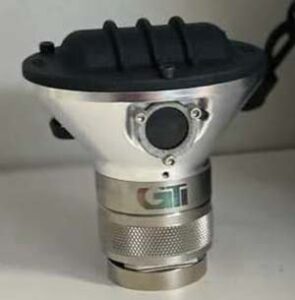 Equipment maintenance is one of the biggest cost centers for many manufacturers. Machine tool operators are certainly no exception to this rule. Maintenance programs of the past sought to increase the uptime and lifespan of spindles by ensuring they were well cared for on a routine basis, thus minimizing the chance that they would break down at the worst possible time (which they always seem to do), halt production, and negatively impact work order completion rates.
Equipment maintenance is one of the biggest cost centers for many manufacturers. Machine tool operators are certainly no exception to this rule. Maintenance programs of the past sought to increase the uptime and lifespan of spindles by ensuring they were well cared for on a routine basis, thus minimizing the chance that they would break down at the worst possible time (which they always seem to do), halt production, and negatively impact work order completion rates.
More and more machine shops are now looking to technology to see how investing in sensor systems and data analytics software might further optimize productivity, uptime, and profit. This is achieved by minimizing spindle repair costs and downtime by conducting maintenance before minor issues lead to much costlier ones. This is the key to success with any predictive maintenance program.
Why is Predictive Maintenance Easier Now than Before?
While the concept of predictive maintenance isn’t new, it’s much easier and more affordable today due to technological advancements in sensors, data storage, and AI-driven analytical software. These three key pieces of technology combined, provide the ability to intelligently predict maintenance and service requirements. They yield higher levels of accuracy as they can track and analyze current machine readings and historical data, measured against expected machine performance.
Sensor Accuracy and Lower Data Storage Costs Make Predictive Maintenance Affordable
 It’s important to appreciate just how quickly technology has progressed in the previous two decades. Not only have our devices gotten smarter but the cost of accessing high-speed internet and cloud data storage has made accessing “big data” a possibility for almost every business. This combined with the increased accuracy and effectiveness of sensor technology means that many machine shops can invest in a predictive maintenance solution with very low overheads.
It’s important to appreciate just how quickly technology has progressed in the previous two decades. Not only have our devices gotten smarter but the cost of accessing high-speed internet and cloud data storage has made accessing “big data” a possibility for almost every business. This combined with the increased accuracy and effectiveness of sensor technology means that many machine shops can invest in a predictive maintenance solution with very low overheads.
However, it’s vital to understand that predictive maintenance programs are only as good as the historical data they use. This is why it’s crucial to start collecting benchmark data from the day your new or repaired spindle is installed, as we discussed in a previous blog. Delaying investment in predictive maintenance prolongs the time it takes for a business to collect the mission-critical data required for these programs to be effective, competitive, and show a return on investment.
What Are You Waiting For?
So, for those of you who haven’t implemented a predictive maintenance program to protect your spindles: what are you waiting for? Now is the time to do it since system costs are relatively lower, while accuracy is up. Having an affordable yet proven solution in place is like having a crystal ball. It will allow you to diagnose and resolve relatively minor spindle problems before they grow into much larger, costlier ones. This adds up to lower repair and replacement expenses over time, less downtime, and happier customers. All of which contributes to a healthier bottom line.
> Click here to learn about our Predictive Maintenance Solutions for Spindles & Machine Tools
